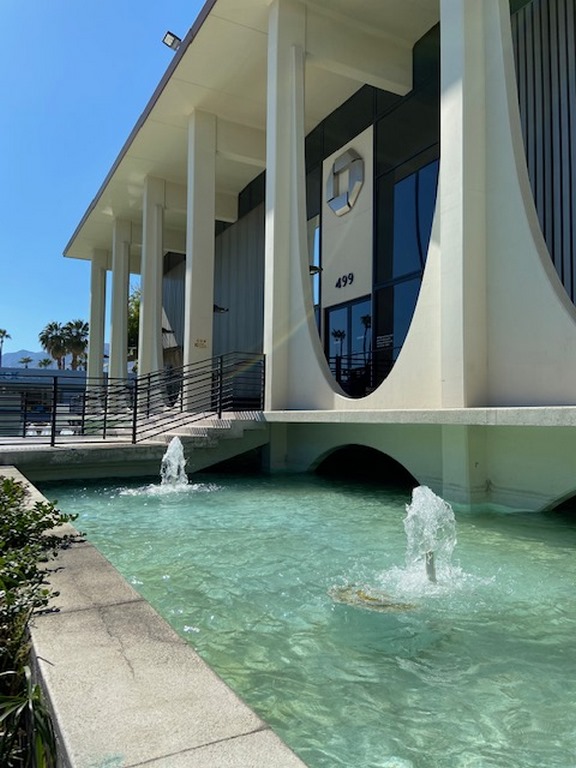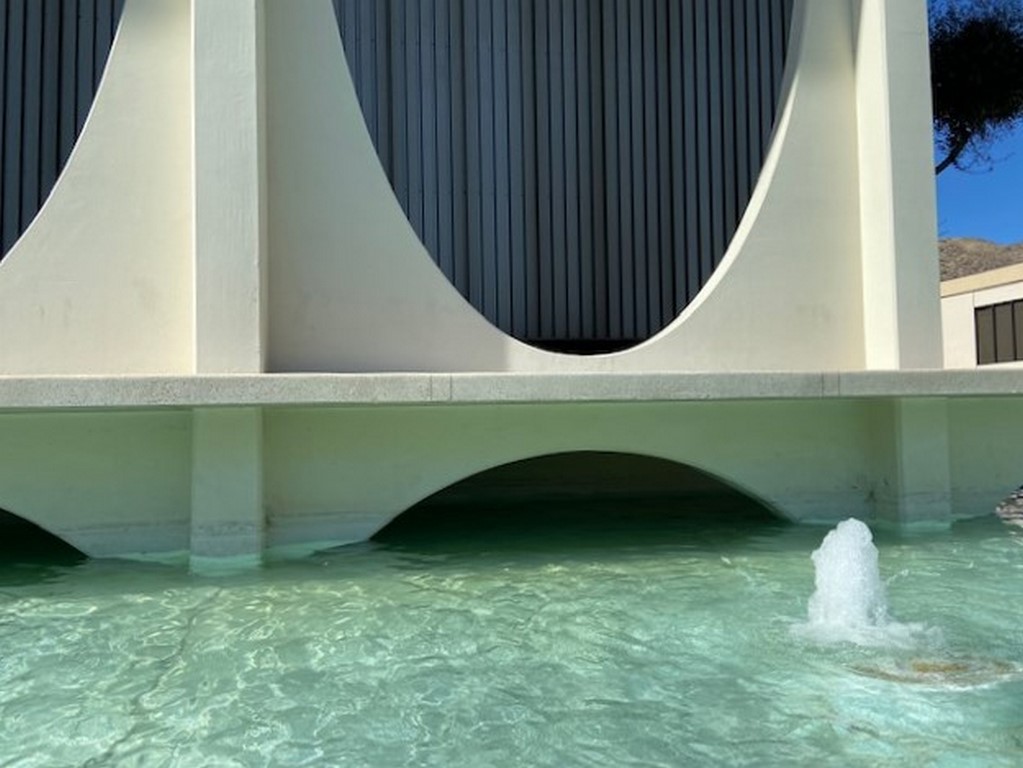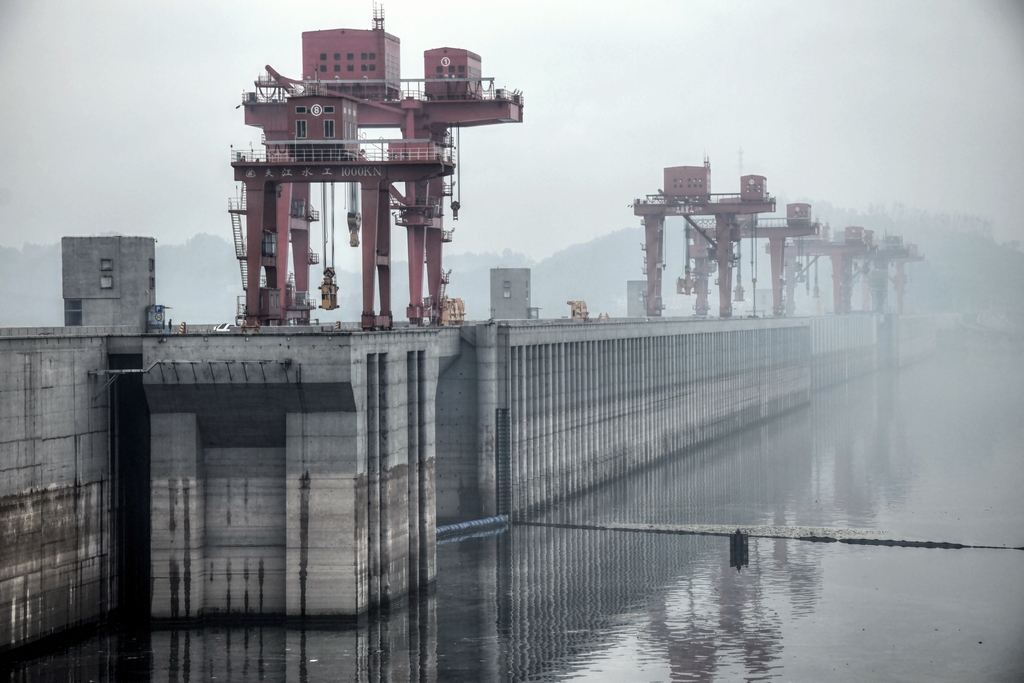Concrete Contemporary

 Concrete is amazing material. Its presence in the modern architectural landscape is so widespread and diverse, it can be easy to miss the masterful way it’s been used both as a structural and aesthetic element. Here’s an example of both, a modern classic Eric Herman discovered near his home in the California desert.
Concrete is amazing material. Its presence in the modern architectural landscape is so widespread and diverse, it can be easy to miss the masterful way it’s been used both as a structural and aesthetic element. Here’s an example of both, a modern classic Eric Herman discovered near his home in the California desert.
Eric Herman
On a beautiful Sunday afternoon, walking down swanky Palm Canyon Dr. in Palm Springs, Calif., my wife, Diane, and I made an interesting discovery. Always on the lookout for water features to photograph, I was capturing some images of a fountain feature on the front of a bank building when we noticed a bronze plaque by the sidewalk.
It explained the building was originally the Coachella Valley Savings and Loan when it was completed in 1961. (It’s now a Chase branch.) According to the inscription, the building was designed by architect E. Stewart Williams, one of the most prominent masters of mid-century modernism.
 Now on the National Registry of Historic Places, the building features an important innovation in the form of upside-down concrete arches made of reinforced concrete. It’s a look we’ve all seen countless times in commercial buildings of the era, but apparently this one was a trailblazer.
Now on the National Registry of Historic Places, the building features an important innovation in the form of upside-down concrete arches made of reinforced concrete. It’s a look we’ve all seen countless times in commercial buildings of the era, but apparently this one was a trailblazer.
A bit of online research revealed that the building’s innovative design was one of, if not the first, of its kind. It garnered numerous awards and accolades for Williams, and would be replicated to varying degrees for decades in commercial buildings around the world.
It was part of a dynamic run of innovative designs by Williams in the 50s and 60s. Among his signatures was the use of dramatic concrete elements that were both decorative and structural. (He’s also the architect responsible for Frank Sinatra’s famous piano-shaped swimming pool at his Palm Springs house, which is only a few blocks from the Savings and Loan building.)
At the Savings and Loan building, the arches form a secondary façade in front of a soaring two-story glass and aluminum mullion structure. The idea was to provide a shaded area that would help buffer the interior from the heat. Along with a long fountain pool in the front, visitors coming in from the often-torrid heat are welcomed by a cool and shaded space, defined by the dramatic geometric architecture.
 Williams was among a class of visionary architects advancing the use of concrete including other luminaries such as John Lautner, Albert Frey, and Frank Lloyd Wright, Jr., among many others. The creative use of concrete as an aesthetic design element would become one of the signatures of mid-20th Century modernism, also known as “Martini Modern.”
Williams was among a class of visionary architects advancing the use of concrete including other luminaries such as John Lautner, Albert Frey, and Frank Lloyd Wright, Jr., among many others. The creative use of concrete as an aesthetic design element would become one of the signatures of mid-20th Century modernism, also known as “Martini Modern.”
* * *
As I was jumping around the internet looking for other examples of concrete in modernism, I ran across a handful of factoids on different websites that together paint a fascinating picture of this material we so easily take for granted. Here are some highlights:
[] When the Romans invented concrete in the 3rd Century BC, they mixed lime and volcanic ash, known as pozzolana, from Mount Vesuvius. It was a primitive mix design, but one that led to the construction of many iconic Roman structures including the Pantheon (still the world’s largest unreinforced concrete dome), the Colosseum, Circus Maximus and its famous system of aqueducts. [] Modern cement, what we call Portland Cement, was invented in 1824 by Britain’s Joseph Aspdin. He named it Portland after a quarry that produced strong stones he used as aggregate. Portland Cement is the most common cement type used in concrete today. [] Thomas Edison held more than 50 patents that used concrete, including concrete house construction and concrete furniture. [] China’s Three Gorges Dam (left) on the Yangtze River is the heaviest concrete structure in the world, containing over 144 billion pounds of concrete.
[] China’s Three Gorges Dam (left) on the Yangtze River is the heaviest concrete structure in the world, containing over 144 billion pounds of concrete.









